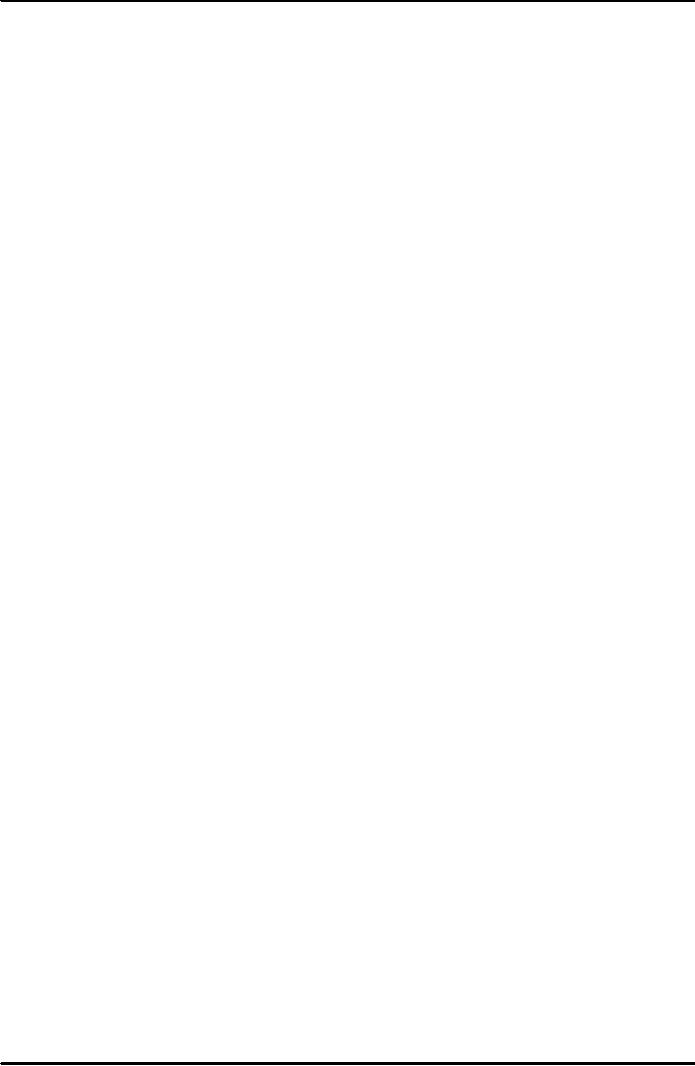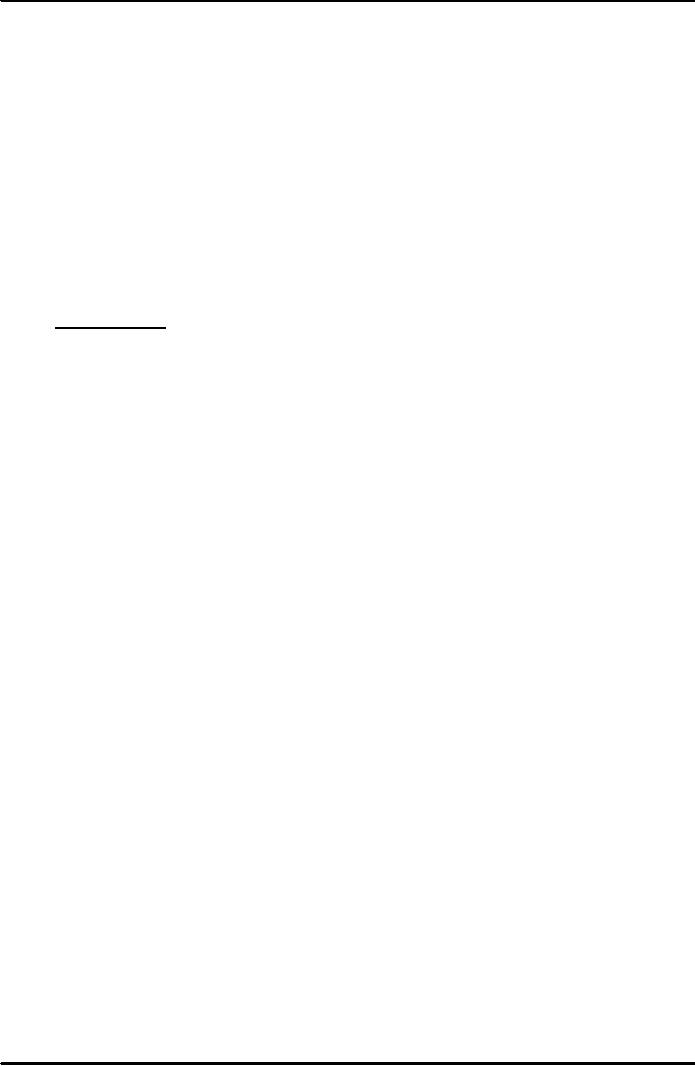 |
THE GOVERNMENT SAFETY NET:Supervision and Examination |
| << SECURITIES FIRMS (Continued):Finance Companies, Banking Crisis |
| THE GOVERNMENT'S BANK:The Bankers' Bank, Low, Stable Inflation >> |

Money
& Banking MGT411
VU
Lesson
29
THE
GOVERNMENT SAFETY
NET
There
are three reasons for the
government to get involved in the
financial system
To
protect investors
To
protect bank customers from
monopolistic exploitation
To
ensure the stability of the financial
system
Investor
Protection
Small
investors are unable to judge the
soundness of financial
institutions
In
practice only force of law
ensure the bank's integrity,
thus investors rely on government
to
protect
them from mismanagement and
malfeasance
Protection
from monopolistic exploitation
Monopolists
exploit their customers by
raising prices to earn
unwarranted profits
Government
intervenes to prevent firms in an
industry from becoming too
large. The same
may
apply
to banks as well
Stability
of financial system
Liquidity
risk and information asymmetry indicate
the instability of financial
system
Financial
institution can create and destroy the
value of its assets in a
very short period, and
a
single
firm's failure can bring
down the whole system
Government
officials employ a combination of
strategies to protect investors and
ensure the
stability
of the financial system
They
provide the safety net to insure small
depositors
They
operate as the lender of last resort
The
Unique Role of Depository
Institutions
Depository
institutions receive a disproportionate amount of
attention from
government
regulators
because
They
play a central role in the
economy
They
face a unique set of
problems
We
all rely heavily on banks
for access to the payments
system
Banks
are also prone to runs, as
they hold illiquid assets to
back their liquid
liabilities,
promising
full and constant value to the depositors
based on assets of uncertain
value
They
are linked to each other
both on their balance sheets
and in their customers'
minds;
This
interconnectedness of banks is almost
unique to the financial
industry
The
Government as Lender of Last
Resort
The
best way to stop a bank
failure from turning into a
panic is to make sure solvent
institutions
can
meet their depositors'
withdrawal demands
The
existence of a lender of last resort significantly
reduces, but does not
eliminate, contagion
For
the system to work, central
bank officials who approve
the loan applications must be
able to
distinguish
an illiquid from an insolvent
institution
It
is important for a lender of last resort
to operate in a manner that minimizes the
tendency for
bankers
to take too much risk in
their operations
Problems
Created by the Government Safety
Net
Protected
depositors have no incentive to monitor
their banks' behavior, and
knowing this,
banks
take on more risk than they
would normally
In
protecting depositors the government
creates moral hazard
Some
banks are too big to
fail, meaning that their
failure would cause havoc in
the financial
system.
The
managers of such institutions
know that if they begin to
founder the government will
have
to
bail them out
The
too-big-to-fail policy limits the
extent of the market
discipline that depositors can
impose
on
banks and compounds the
moral hazard problem
92

Money
& Banking MGT411
VU
Regulation
and Supervision of the
Financial System
Government
officials employ three strategies to
ensure that the risks created by the
safety net
are
contained:
Regulation
establishes rules for bank
managers to follow,
Supervision
provides general oversight of financial
institutions,
Examination
provides detailed information on the
firms' operations
Regulatory
requirements are designed to minimize the
cost of failures to the tax-paying
public
One
example of regulation is the requirement
that banks obtain a charter in
order to operate;
This
provides screening to make sure that the
people who own and
run banks will not
be
criminals.
Once
a bank is operating other
regulations control the assets, the
amount of capital, and makes
information
about the bank's balance sheet
public
Government
supervisors enforce the regulations;
They
monitor, inspect, and examine banks to
make sure that their
business practices conform
to
regulatory
requirements
State
Bank of Pakistan (SBP) is supreme
regulatory authority for
banking sector in Pakistan
www.sbp.org.pk
Asset
Holding Restrictions and
Minimum Capital
Requirements
The
simplest way to prevent bankers
from exploiting their safety net is to
restrict banks' balance
sheets;
This
can be through restrictions on the
kinds of assets banks can
hold and requirements that
they
maintain
minimum levels of
capital
The
size of the loans a bank can
make to particular borrowers is also
limited
Minimum
capital requirements complement these
limitations on bank
assets
Capital
serves as a cushion against declines in the value of
the bank's assets, lowering
the
likelihood
of the bank's failure, and is a way to
reduce the problem of moral
hazard
Capital
requirements take two basic
forms:
The
first requires banks to keep their
ratio of capital to assets above
some minimum level
regardless
of the structure of their balance
sheets;
The
second requires banks to hold
capital in proportion to the riskiness of
their operations
Banks
must provide information to the
financial markets about
their balance sheets;
Supervision
and Examination
The
government enforces banking rules and
regulations through an elaborate
oversight process
called
supervision, which relies on a
combination of monitoring and
inspection
Supervision
is done remotely, through an examination
of the detailed reports banks
must
submit,
as well as through on-site
examination
At
the largest institutions, examiners are on site
all the time; this is called
continuous
examination
The
most important part of a
bank examination is the evaluation of
past-due loans, to see if
they
should
be declared in default
Supervisors
use the acronym CAMELS to
describe the criteria used
to evaluate the health of
the
bank:
Capital
adequacy,
Asset
quality,
Management,
Earnings,
Liquidity,
Sensitivity
to risk
Current
practice is for examiners to act as consultants to
banks, advising them on how to get
the
highest
return possible while keeping
risk at an acceptable level
that ensures the bank will
stay
in
business
93
Table of Contents:
- TEXT AND REFERENCE MATERIAL & FIVE PARTS OF THE FINANCIAL SYSTEM
- FIVE CORE PRINCIPLES OF MONEY AND BANKING:Time has Value
- MONEY & THE PAYMENT SYSTEM:Distinctions among Money, Wealth, and Income
- OTHER FORMS OF PAYMENTS:Electronic Funds Transfer, E-money
- FINANCIAL INTERMEDIARIES:Indirect Finance, Financial and Economic Development
- FINANCIAL INSTRUMENTS & FINANCIAL MARKETS:Primarily Stores of Value
- FINANCIAL INSTITUTIONS:The structure of the financial industry
- TIME VALUE OF MONEY:Future Value, Present Value
- APPLICATION OF PRESENT VALUE CONCEPTS:Compound Annual Rates
- BOND PRICING & RISK:Valuing the Principal Payment, Risk
- MEASURING RISK:Variance, Standard Deviation, Value at Risk, Risk Aversion
- EVALUATING RISK:Deciding if a risk is worth taking, Sources of Risk
- BONDS & BONDS PRICING:Zero-Coupon Bonds, Fixed Payment Loans
- YIELD TO MATURIRY:Current Yield, Holding Period Returns
- SHIFTS IN EQUILIBRIUM IN THE BOND MARKET & RISK
- BONDS & SOURCES OF BOND RISK:Inflation Risk, Bond Ratings
- TAX EFFECT & TERM STRUCTURE OF INTEREST RATE:Expectations Hypothesis
- THE LIQUIDITY PREMIUM THEORY:Essential Characteristics of Common Stock
- VALUING STOCKS:Fundamental Value and the Dividend-Discount Model
- RISK AND VALUE OF STOCKS:The Theory of Efficient Markets
- ROLE OF FINANCIAL INTERMEDIARIES:Pooling Savings
- ROLE OF FINANCIAL INTERMEDIARIES (CONTINUED):Providing Liquidity
- BANKING:The Balance Sheet of Commercial Banks, Assets: Uses of Funds
- BALANCE SHEET OF COMMERCIAL BANKS:Bank Capital and Profitability
- BANK RISK:Liquidity Risk, Credit Risk, Interest-Rate Risk
- INTEREST RATE RISK:Trading Risk, Other Risks, The Globalization of Banking
- NON- DEPOSITORY INSTITUTIONS:Insurance Companies, Securities Firms
- SECURITIES FIRMS (Continued):Finance Companies, Banking Crisis
- THE GOVERNMENT SAFETY NET:Supervision and Examination
- THE GOVERNMENT'S BANK:The Bankers' Bank, Low, Stable Inflation
- LOW, STABLE INFLATION:High, Stable Real Growth
- MEETING THE CHALLENGE: CREATING A SUCCESSFUL CENTRAL BANK
- THE MONETARY BASE:Changing the Size and Composition of the Balance Sheet
- DEPOSIT CREATION IN A SINGLE BANK:Types of Reserves
- MONEY MULTIPLIER:The Quantity of Money (M) Depends on
- TARGET FEDERAL FUNDS RATE AND OPEN MARKET OPERATION
- WHY DO WE CARE ABOUT MONETARY AGGREGATES?The Facts about Velocity
- THE FACTS ABOUT VELOCITY:Money Growth + Velocity Growth = Inflation + Real Growth
- THE PORTFOLIO DEMAND FOR MONEY:Output and Inflation in the Long Run
- MONEY GROWTH, INFLATION, AND AGGREGATE DEMAND
- DERIVING THE MONETARY POLICY REACTION CURVE
- THE AGGREGATE DEMAND CURVE:Shifting the Aggregate Demand Curve
- THE AGGREGATE SUPPLY CURVE:Inflation Shocks
- EQUILIBRIUM AND THE DETERMINATION OF OUTPUT AND INFLATION
- SHIFTS IN POTENTIAL OUTPUT AND REAL BUSINESS CYCLE THEORY